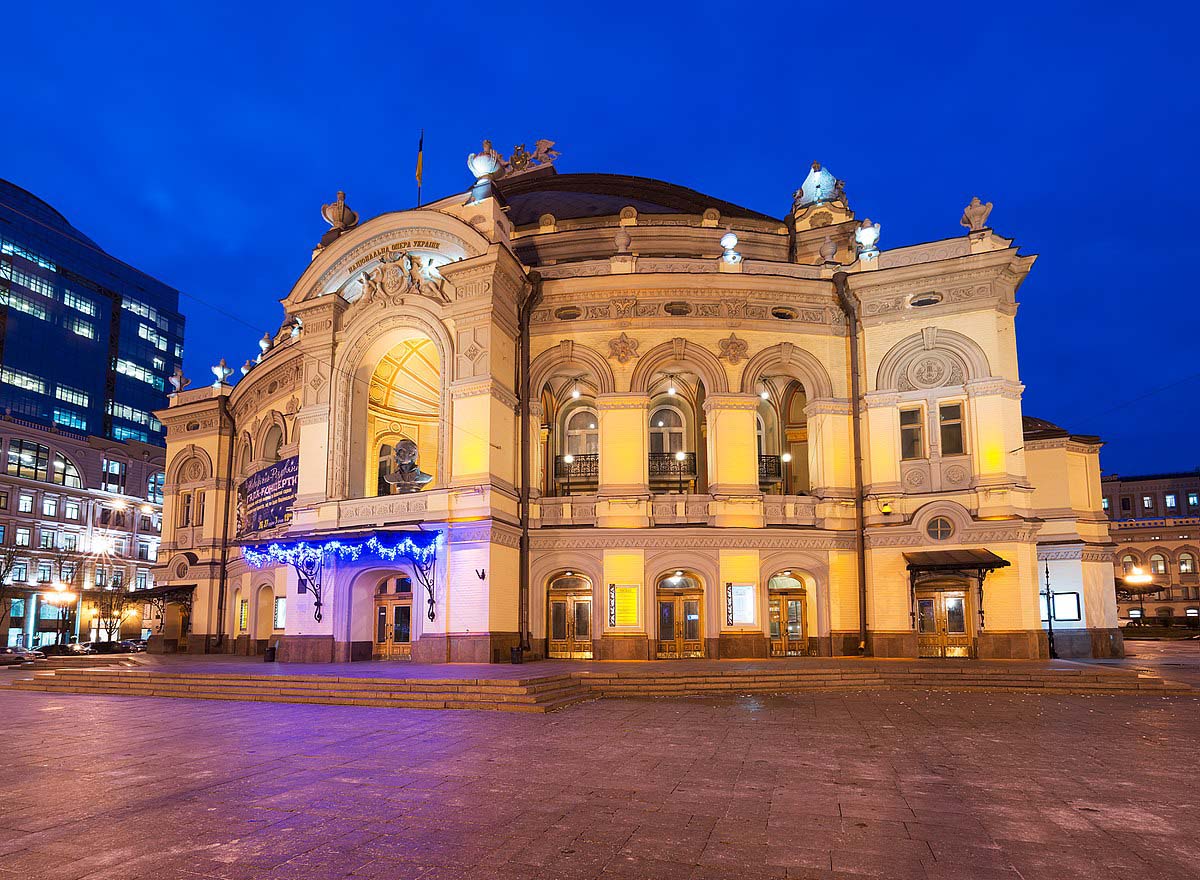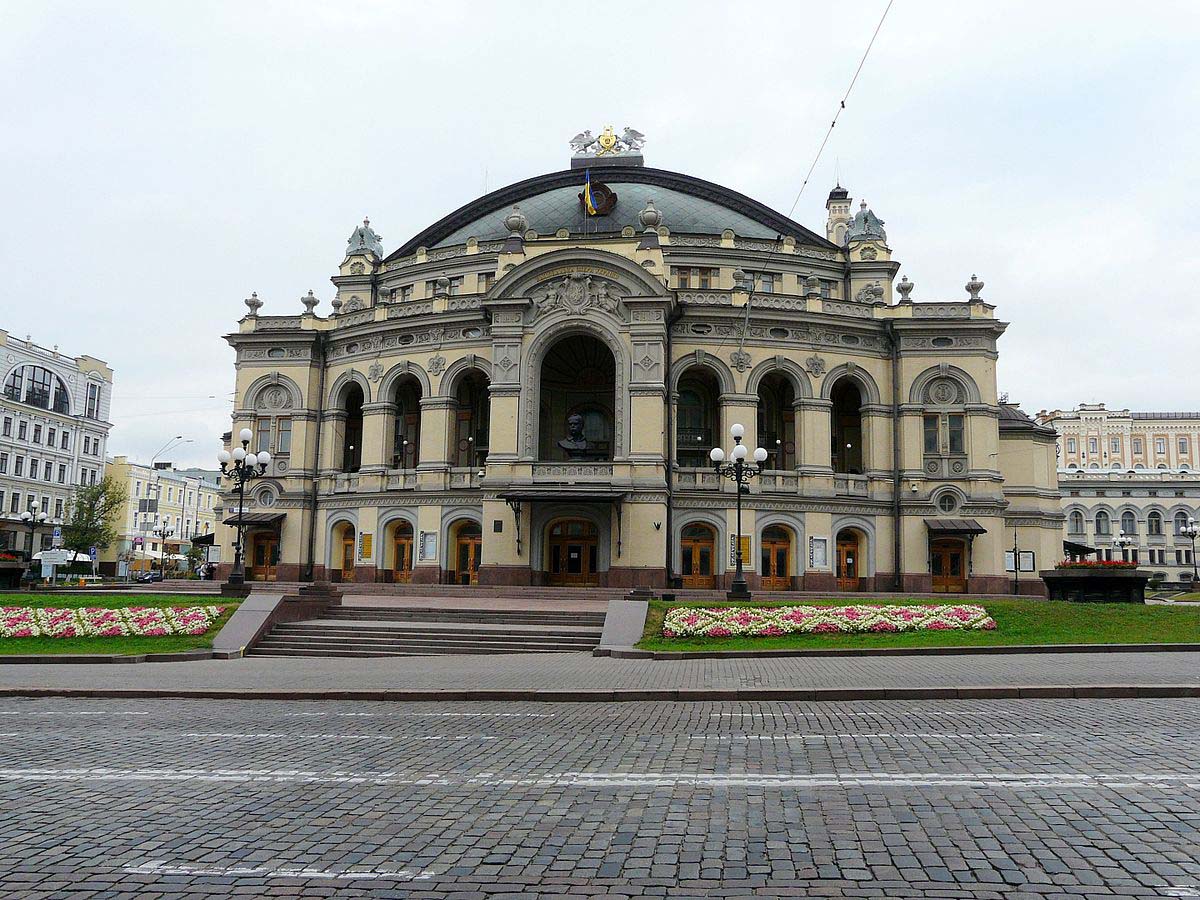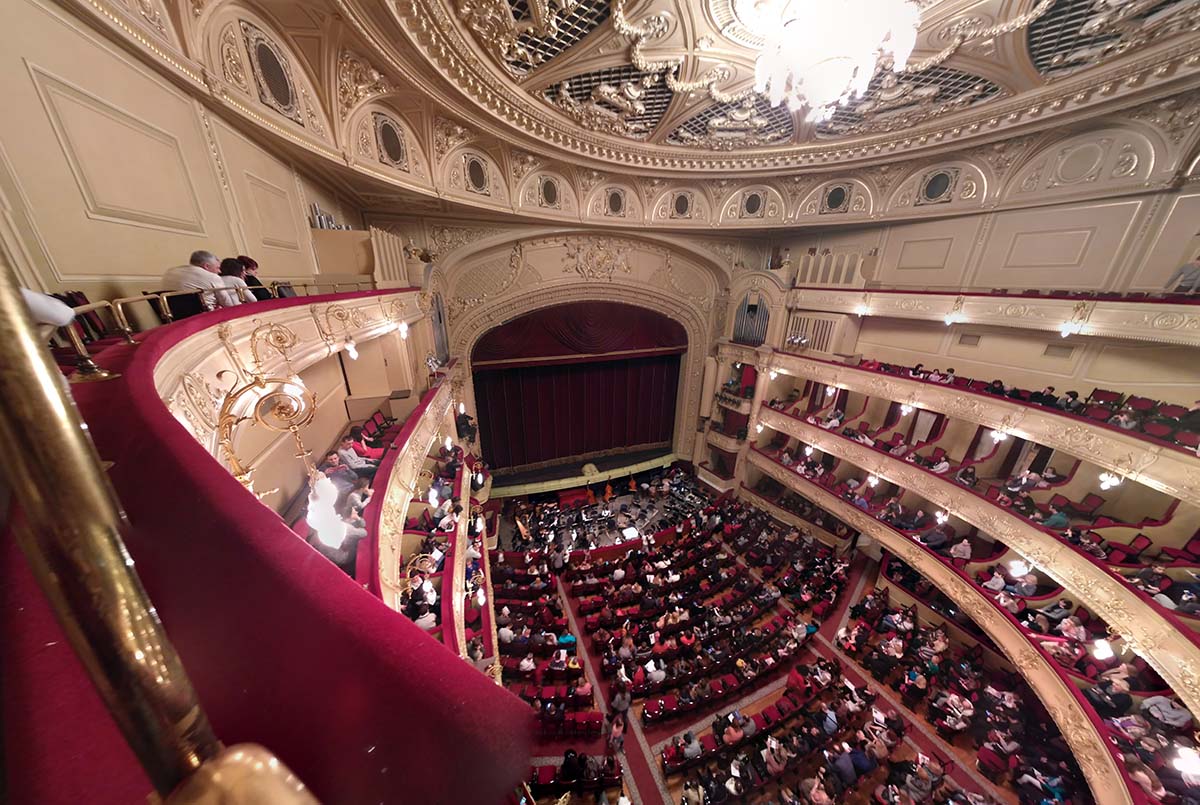A permanent opera troupe was organized in Kyiv in 1867 and became one of the best in the Russian Empire. The troupe worked in the premises of the City Theater, built in 1856 according to the design of the architect Shtrom. In 1896, on the last day of the theater season, a fire occurred that completely destroyed the building of the City Theater. Construction of a new building on the site of the old theater began in October 1897 according to the design of the architect Victor Schröter. The opera house hall included a stall, an amphitheater, a mezzanine and four tiers that accommodate about 1,700 spectators. Above the main entrance of the theater, the official coat of arms of Kiev was installed with the image of the Archangel Michael, the patron saint of the city, but at the insistence of the Kiev Metropolitan, who considered the theater a sinful institution, the coat of arms was replaced with an allegorical composition: heraldic griffins holding a lyre in their paws as a symbol of musical art. The facade of the building was decorated with busts of composers M. Glinka and A. Serov, T. Shevchenko. The grand opening and consecration of the new building took place in September 1901.
During the Great Patriotic War, the theater was evacuated to Ufa, then to Irkutsk, and in 1944 it returned to Kyiv. In 1961, hall temperature control was installed in the building (the second theater in the USSR with such equipment). In 1983-1988, a major reconstruction of the theater premises was carried out. The restorers made significant changes to the backstage part of the theater, which made it possible to increase the number of rehearsal rooms and dressing rooms, a special choir class was equipped, the size of the stage was increased, and a new one was installed in place of the old organ. The orchestra pit was also refurbished, which can now accommodate 100 musicians at a time.
Nowadays, the national opera of Ukraine has a rich repertoire and many fans and regular visitors.
National repertoire: operas “Taras Bulba”, “Natalka Poltavka”, “Cossack beyond the Danube”, “Yaroslav the Wise”, “Moses”; ballets “The Forest Song”, “The Little Mermaid”, “The Night Before Christmas”, “The Lord of Borysthenes”, “Pinocchio and the Magic Violin”, “Daniela”.
Russian classics: operas “The Queen of Spades”, “Eugene Onegin”, “Iolanta”, “Prince Igor”, “Boris Godunov”, “The Tsar’s Bride”, “Aleko” ; ballets “Swan Lake”, “Sleeping Beauty”, “The Nutcracker”, “La Bayadère”, “Don Quixote”, “Paquita”, “Raymonda”, “Scheherazade”.
Italian operas: “Macbeth”, “Rigoletto”, “La Traviata”, “Un ballo in maschera”, “Aida”, “Rigoletto”, “Manon Lescaut”, “La bohème”, “Tosca”, “ Madame Butterfly” (Chio-chio-san), “Turandot”, “The Barber of Seville”, “Cinderella”, “Lucia di Lammermoor”, “Elisir of Love”, “Norma”, “La Gioconda”, “Honor Countryside”.
European classics: opera “Carmen”; ballets “Giselle”, “Corsair”, “La Sylphide”.
Composers of the 20th century: opera “The Love for Three Oranges”; ballets “Romeo and Juliet”, “Cinderella”, “Zorba the Greek”, “Spartacus”, “Cipollino”, “The Legend of Love”, “Snow White and the Seven Dwarfs”, “Carmen Suite”, “Bolero”.
Where is the National Academic Opera and Ballet Theater of Ukraine named after Taras Shevchenko?
Vladimirskaya street, 50
(044) 235-26-06, 234-03-53





